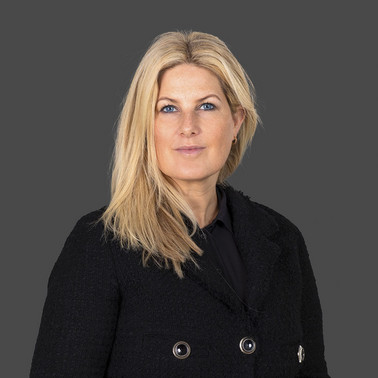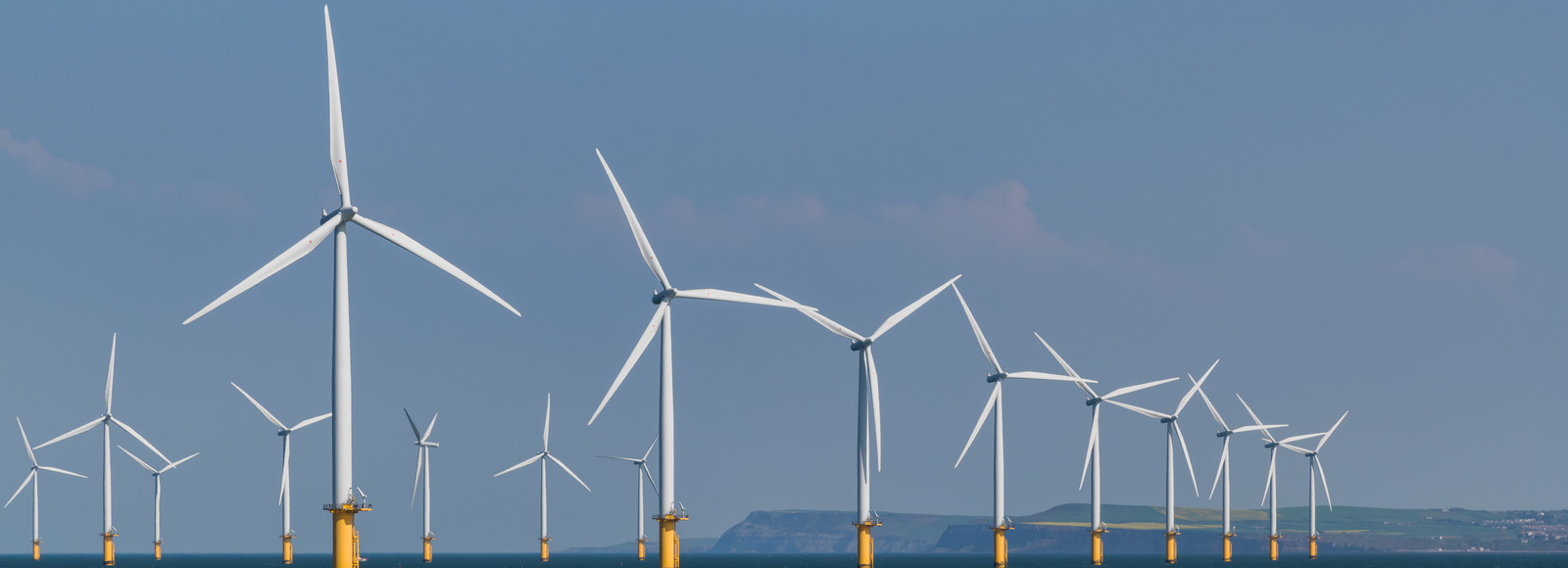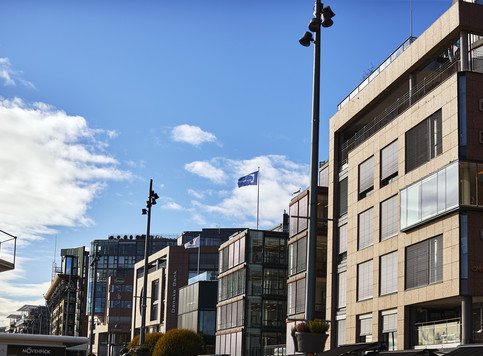Offshore wind development and regulation in Norway
This article is a part of DLA Pipers publication series: 'Navigating New Horizons'. Explore the offshore wind market regulation in six emerging jurisdictions - Australia, Brazil, Ireland, Japan, New Zealand, and Norway - by clicking here.
The Norwegian government announced on 12 June 2020 that Utsira Nord (floating installations) (UN) and Sørlige Nordsjø II, Phase 1 (bottom-fixed (or floating) installations) (SNII) will be opened for licensing applications of offshore wind farm projects. On 17 October 2023, the government confirmed that the deadline for applying for pre-qualification in the licensing process for SNII was postponed to 15 November 2023.
A successful auction and allocation of areas within SNII took place on 18 March 2024, and the consortium Ventyr SN II AS (consisting of Parkwind and Ingka Investments) won at a price of 1.15 NOK/kWh. Two bidders participated, and the other bidder, Equinor (JV partner with RWE) lost the auction. The other pre-qualified participants (Statkraft and the Shell, Lyse and Eviny consortium) did not participate in the bid auction taking place on 18 March 2024.
In total 7 consortiums applied for pre-qualification, of which 5 were pre-qualified and 1 participant withdrew in this pre-qualifying process. For UN the deadline has yet to be confirmed, as the process has been somewhat delayed due to ongoing clarifications with ESA on state aid pre-approval related to qualitative criteria in combination with a subsequent CfD competitive process between the 3 best participants, cf. the guidelines on state aid for climate, environmental protection and energy (CEEAG from 2022). The government has recently stated they work hard on clarifying this process as soon as possible, but 22 March 2024 it was informed that ESA needs more time to assess the matter, and that the delay of clarifying the floating offshore wind model may take up to worst case 18 months more (i.e. going into 2025). This results in an unforeseen delay of the Utsira Nord floating offshore wind projects.
The government is considering additional areas to be made available for offshore wind projects, and Norway's Water Resources and Energy Directorate (NVE) has received a mandate to identify the best suited areas for development of offshore wind on behalf of the Norwegian state. In NVE’s report dated 25 April 2023, NVE has identified 20 new areas, in addition to expand the current SNII and UN areas. The best qualified areas are expected to be opened within 20251.
Production, conversion and transmission of offshore energy on Norwegian sea territory and on the Norwegian continental shelf is regulated in the Offshore Energy Act (Havenergiloven) and the Offshore Energy Act Regulation (Havenergiforskriften) in addition to the guidelines for allocation of areas, licensing process etc to fill in interpretation of these laws and regulations (for offshore wind projects outside the "geographical baseline," for offshore wind projects being constructed within the baseline, the Energy Act (Energilova) will apply).
Due to a significant the number of interested developers within SNII and UN, the government has found it necessary to amend the Offshore Energy Act and the Offshore Energy Act Regulation to ensure there’s a clear, balanced and fair public process to determine the awarding of the seabed rights/licensing areas within UN and SNII.
The Norwegian Ministry of Petroleum and Energy (MPE) is continuously working on preparing the legal basis for the regulatory framework to reflect the latest political and legal status for the offshore wind process.
Pre-qualification process
Primarily, all participants applying in the licensing process must be pre-qualified to be included in the awarding assessment by the government. According to the current regulatory framework, a license to operate and construct an offshore wind farm project may only be awarded to a legal entity established and registered in accordance with Norwegian law (typically a Norwegian private limited liability company, an “AS”), unless otherwise decided by applicable international agreements, cf. section 3-5 in the Offshore Energy Act. We assume this will also be a requirement post-revision of the regulatory framework.
The amendments to the offshore energy regulatory framework relate to expanding and clarifying the pre-qualification requirements. The legal entity applying for a license must evidence sufficient technical competence and financial capacity. In addition, the entity must also comply with applicable health, environmental and safety (HES/ESG) laws and regulations. The proposed guidelines elaborate on the abovementioned requirements, including how the compliance with these requirements shall be documented. These include among others:
- A full description of applicable experience to plan, construct, own or operate offshore wind projects
- A description of the main potential challenges with the development process that is apparent to the company
- Providing the three past years’ of annual financial statements
- A description of the company's financial position, budget and financing plan
- The company's strategy regarding organisation, employees, training employees, potential power-to-x synergies to other green industries in Norway, development of local infrastructure and social performance obligations to municipalities nearby, grid connection/system etc.
- The company's work with innovation and R&D in the past five years
The requirements may be collectively fulfilled by the parties of the participating joint venture/consortium.
For SNII some amendments to the original offshore tender process were made in H2 2023:
- The MPE proposed to amend the pre-qualification criteria related to “sustainability” and “positive ripple effects” to minimum requirements that must be fulfilled for participants in the competition (to be included in the CfD). The criteria “sustainability” and “positive ripple effects” will no longer be pre-qualification requirements, including that participants will no longer be compared within these two categories
- The pre-qualification criteria ”positive local ripple effects” is amended to “positive ripple effects”, to clarify that ripple effects are not limited to Norway
- The pre-qualification criteria for execution ability were amended
The award process
Pre-qualified developers will automatically participate in the public awarding process for the licenses. Developers who succeed in the awarding process will be assigned exclusive seabed rights to start developing and constructing either a bottom-fixed or floating offshore wind project within the allocated area.
The developer must provide a program for a development study and impact assessment within six weeks of the awarding of an area (the Program), followed by a specific impact study (environmental and more detailed seabed study) within two years after the license award. The exclusive rights will be subject to conditions (e.g. maximum installed capacity), and the seabed rights will remain exclusive as long as the development process deadlines set by MPE are complied with. Further, the developer must apply for a facility license within two years of the approval of the Program. The government may extend the deadlines, with restrictions on transfers and assignments (whether direct or indirect) of license awards and exclusive rights.
In relation to (direct or indirect) change of ownership / change of control situations, the public hearings on the (final) CfD for SNII have resulted in the following clarifications:
- The main rule in the CfD is that any direct or indirect (parent or ultimate owner) change of control in ownership in a project company/consortium requires prior approval from the MPE. In the final CfD, the wording has been amended to include more flexibility, including that a consent from the MPE to such change in ownership prior to completion (in practice COD of the offshore wind farm) can only be denied if the MPE has a reasonable cause ( saklig grunn).
- The final CfD regulates explicitly that in case of any change in ownership in an indirect owner being listed on a stock exchange or regulated marketplace, this will not require a consent from the MPE. Only if a change of control occurs as a result of such share/security interest transfer, a consent must be obtained from the MPE.
- When determining whether a change of “control” has taken place, it is now stated in the CfD that the definition set out in the Norwegian Private Limited Liability Companies Act, section 1-3 applies (more than 50% of the shares/votes or control over the majority of the board members in a subsidiary).
The license will include specific conditions for development and decommission deadlines. It is expected that the right to exclusivity will expire when the license expires. At this point, it’s unclear whether similar conditions to those applying to onshore wind licence renewals will be applicable for offshore wind projects.
SN II (primarily bottom-fixed installations
The government has announced that in total 3,000 MW of installed capacity will be made available within the SNII area (Northern Sea). SNII was divided into two phases in Spring 2022, with the first phase being up to 1,500 MW installed capacity (Phase 1), and the second phase being up to 1,500 MW installed capacity (Phase 2).
The SNII areas will be awarded in an auction process – in general based on competition – taking place in two steps; a pre-qualification process, and an auction process based on quantitative criteria, including bid price (in which pre-qualified JVs/consortiums bid for acreage).
One particular clarification to note for foreign investors is that a consortium of investors does not need to establish the JV company subject to the Offshore Energy Act, Section 3-5, to be prequalified for an offshore wind area, as long as the consortium has entered into a binding cooperation agreement. It is a requirement that the JV company is established within 4 weeks from determining which participants are selected in the pre-qualifying process.
UN (floating wind installations)
The government has announced that in total 1,500 MW of installed capacity will be made available in the UN area. The awarding process for UN will not be based on an auction model but based on qualitative requirements. The government has said that the awarding process will be based on developer-led applications emphasizing promotion of innovation and development of new technology/industry to enable the establishment of Norway as a new market-leading offshore wind country. The technology should also contribute to future reductions in development costs.
There are currently two alternatives for allocating areas in the opened area:
- Alternative 1: Two areas of 500 MW and two areas of 250 MW
- Alternative 2: Two areas of 600 MW and one area of 300 MW
We refer to the introduction on status of the postponed UN process and expected timeline for the licensing process (now 2025).
Grid
The government has stated that for the first round of licensing awarding, there will be no hybrid projects or interconnectors to foreign countries, but only radial connections built to the Norwegian mainland for transfer of the electricity to the grid. This means the offshore wind projects in this first phase, including Phase 1 of SNII, must take into account in the budget and financial plan that no cash flow of electricity prices will be possible to include from foreign countries through exchange, only within the Norwegian grid system (and the various NO(1-5) areas).
Based on our understanding of the current legislation, developers of UN and SNII are responsible for providing plans for development and construction of the grid connections for the project, including to cover costs and expenses for connection. It is currently being discussed how much funding the developers can except to receive from government funding support.. However, since radial connections have been decided for the first licensing round, and the projects will require substantial funding, it’s expected that the Norwegian state will need to contribute more funding than first anticipated.Statnett (the TSO) is currently exploring how to develop the Norwegian grid system to handle the significant increase in capacity extension the upcoming decades. As TSO, Statnett will be responsible for planning and implementing guidelines for developing the offshore grid.
Other approval/permits
Developing and operating offshore wind in Norway will also require additional approvals.
To complete the planning phase, the developer must submit a detailed plan of the project for government approval. Also, to be allowed to sell power through the Norwegian grid, a trading license must be acquired. This should be considered a formality if the regulatory conditions set are fulfilled.
The government has stated that it is yet to be decided on whether any hybrid interconnectors will be considered for SNII, Phase 2 and future offshore wind areas, including whether any subsidies will be rendered by the Norwegian State for both floating and bottom-fixed projects.



